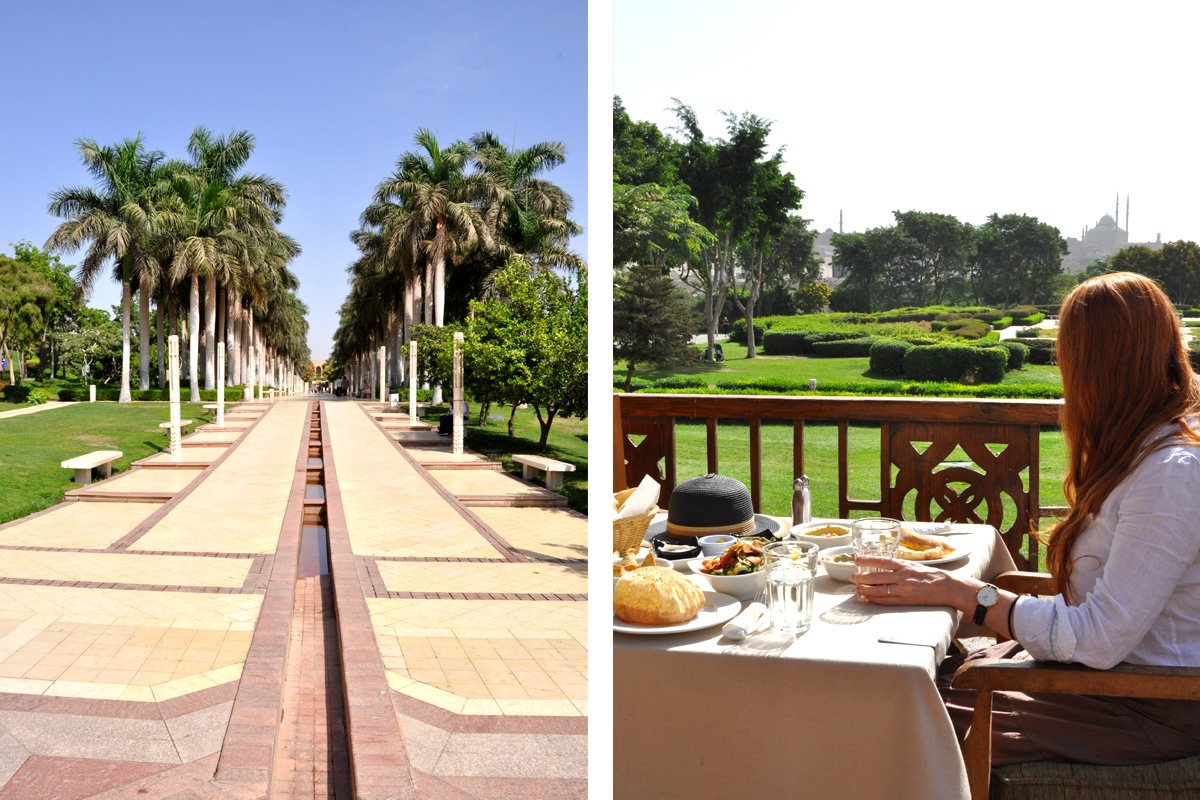Islamic Cairo: A Walking Tour (Plus Maps and Attractions)
8 min readIslamic Cairo is packed with historic mosques, lively souqs and gems from Egypt’s medieval past.
It’s a UNESCO World Heritage Site dating back to the 7th century – and it has one of the thickest concentrations of architectural gems in the Islamic world.
It’s also a great spot to soak in some bustling atmosphere, grab some street food and people-watch. The gems of Islamic Cairo are packed alongside local grocers, street vendors and fruit stands where locals have lived and worked for centuries.
So where do you begin to explore this incredible district?
Islamic Cairo is known for tourist attractions like the Khan el Khalili souq.
But it also has plenty of hidden gems. And getting off the beaten tourist path is easier than you think.
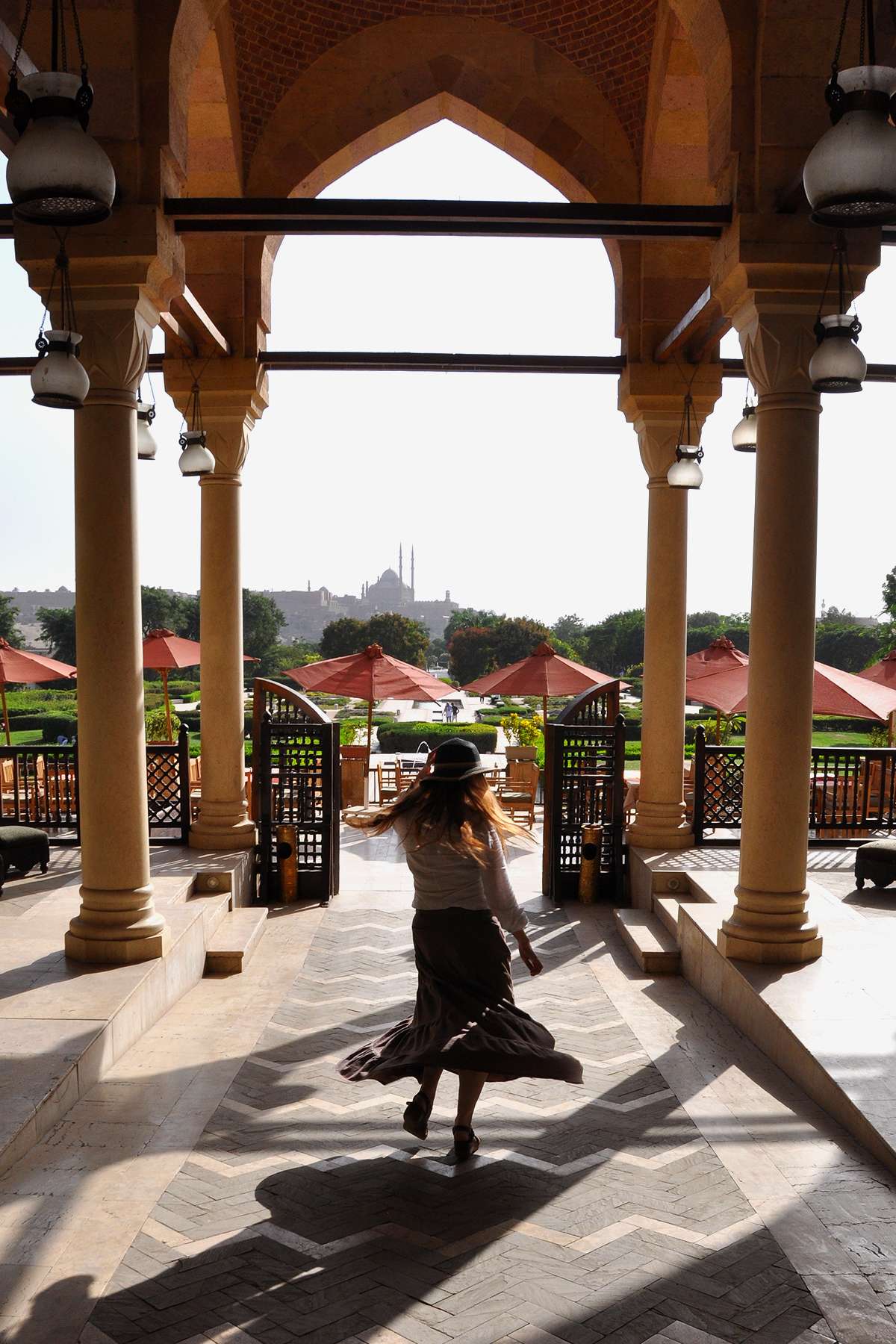
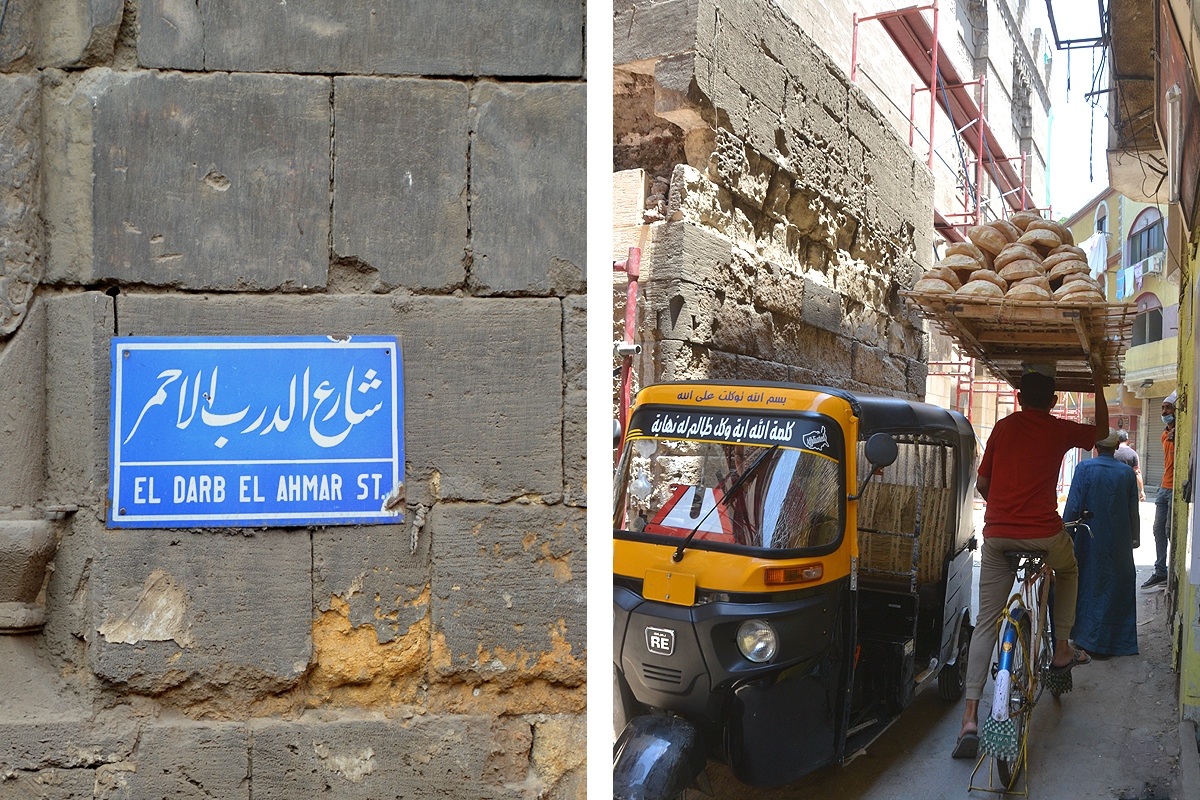
Al Darb al-Ahmar is a vibrant working-class neighborhood in Islamic Cairo that has both 1) splendid historical monuments and 2) an authentic, non-touristy atmosphere.
And it’s right next to Moez Street and Azhar Park (shown above), which means you can combine your Cairo sightseeing with some exploring off the beaten path.
I’m a long-time expat living for over a decade in Cairo, and this is my ultimate guide to Al Darb Al Ahmar. It’s one of my favorite areas to explore for its friendly locals, Mamluk mosques and lively atmosphere.
What is Al Darb Al Ahmar?
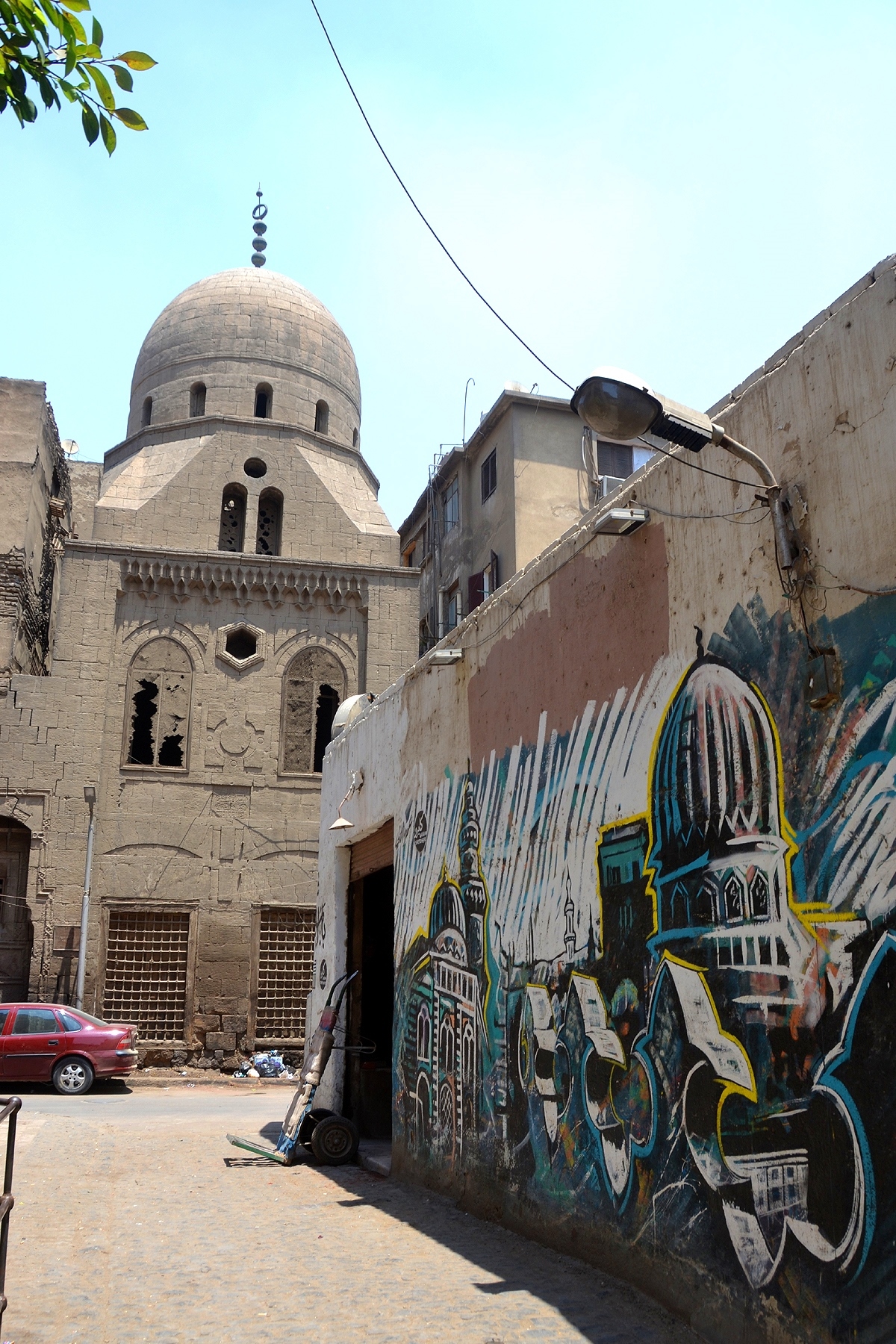
Al Darb Al Ahmar (“The Red Way”) is a historic neighborhood in the heart of Islamic Cairo that was first built in the 10th century. It was founded by the Fatimid Caliphate, a Shia empire originating in Tunisia who also built Azhar Mosque.
But Al Darb Al Ahmar really blossomed in the 14th century when Egypt was ruled by the Mamluk Sultanate, a largely Turkic people who fought as slave-soldiers before they rose to command an empire.
Mamluk amirs and elites eagerly expanded the city of Cairo and build near the Citadel, the seat of the sultan’s power. They competed to build lavish palaces, residencies and mosques along Al Darb Al Ahmar that would showcase their wealth and prestigious rank.
And even today, the neighborhood’s most splendid monuments date to this 14th-century heyday (before the Black Plague came along and the local population dwindled).
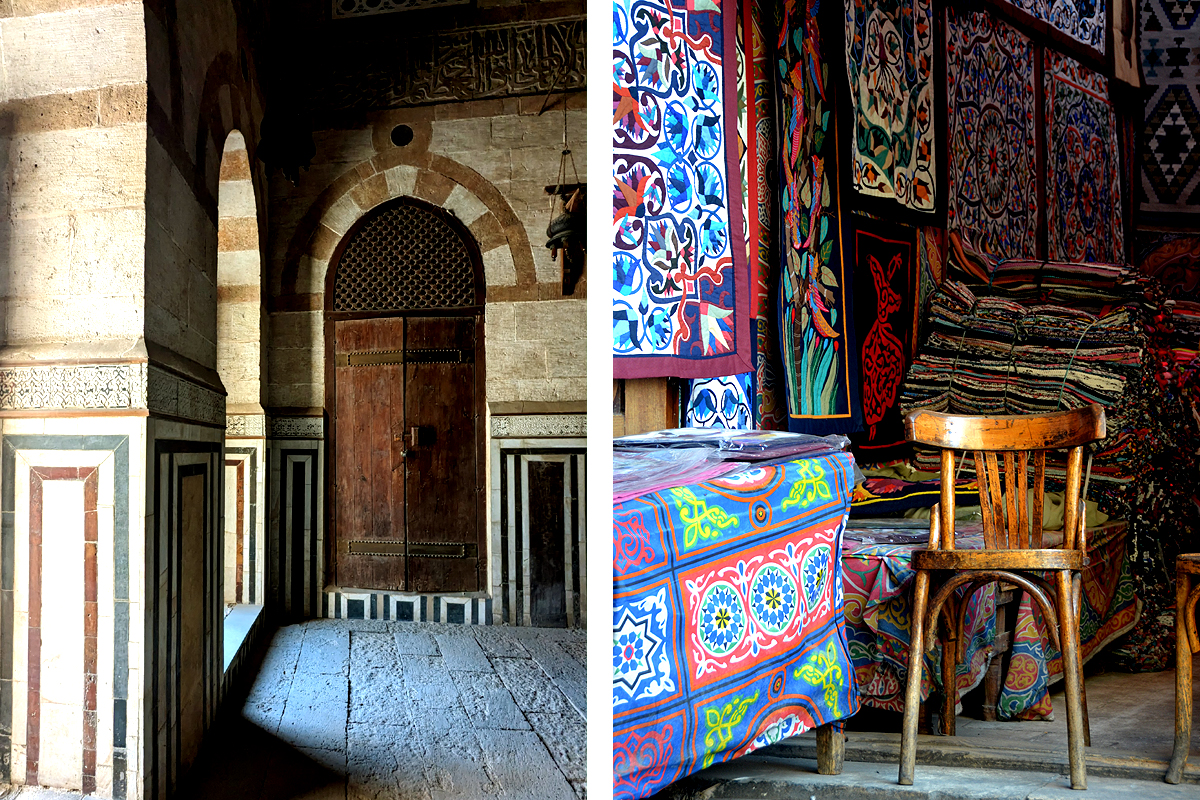
The district gradually recovered and was developed further under the Ottomans, when Muhammad Ali gifted his loyal army officers plots of land in the district.
Today Al Darb Al Ahmar is a working-class neighborhood lined with mechanic shops and narrow streets where only tuktuks fit through. Its historic monuments and mosques loom tall on streets filled with bustling everyday life.
Modern-day renaissance
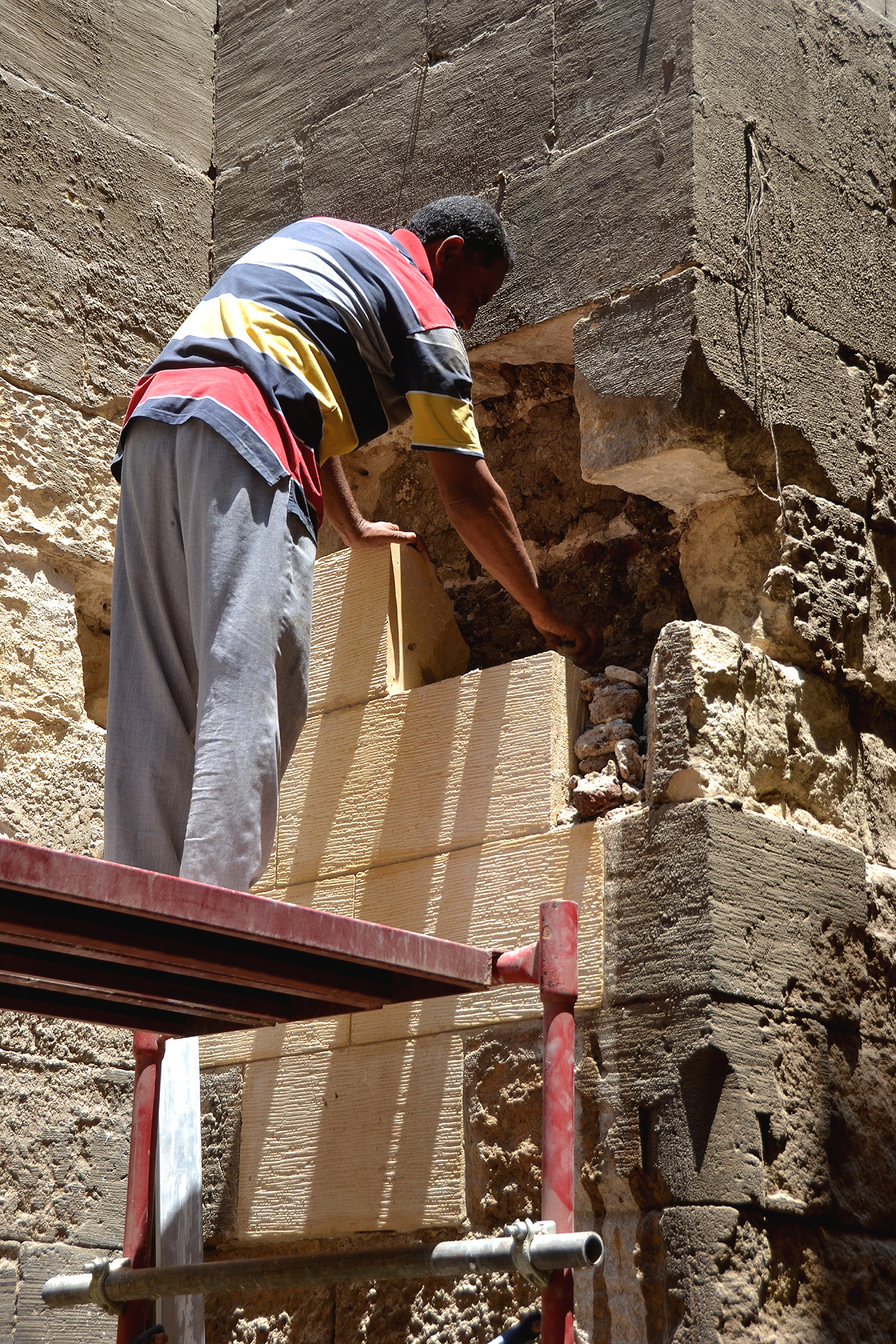
Many old houses in Al Darb Al Ahmar have been demolished and replaced with high-rise residential buildings as Cairo’s population booms.
Locals have lamented the rise of modern, brightly-painted apartments built haphazardly alongside historic mosques. (Look out from Azhar Park onto the views of Al Darb Al Ahmar and you’ll see tall towers peaking out between historic domes and minarets).
But there’s also plenty of reason for hope.
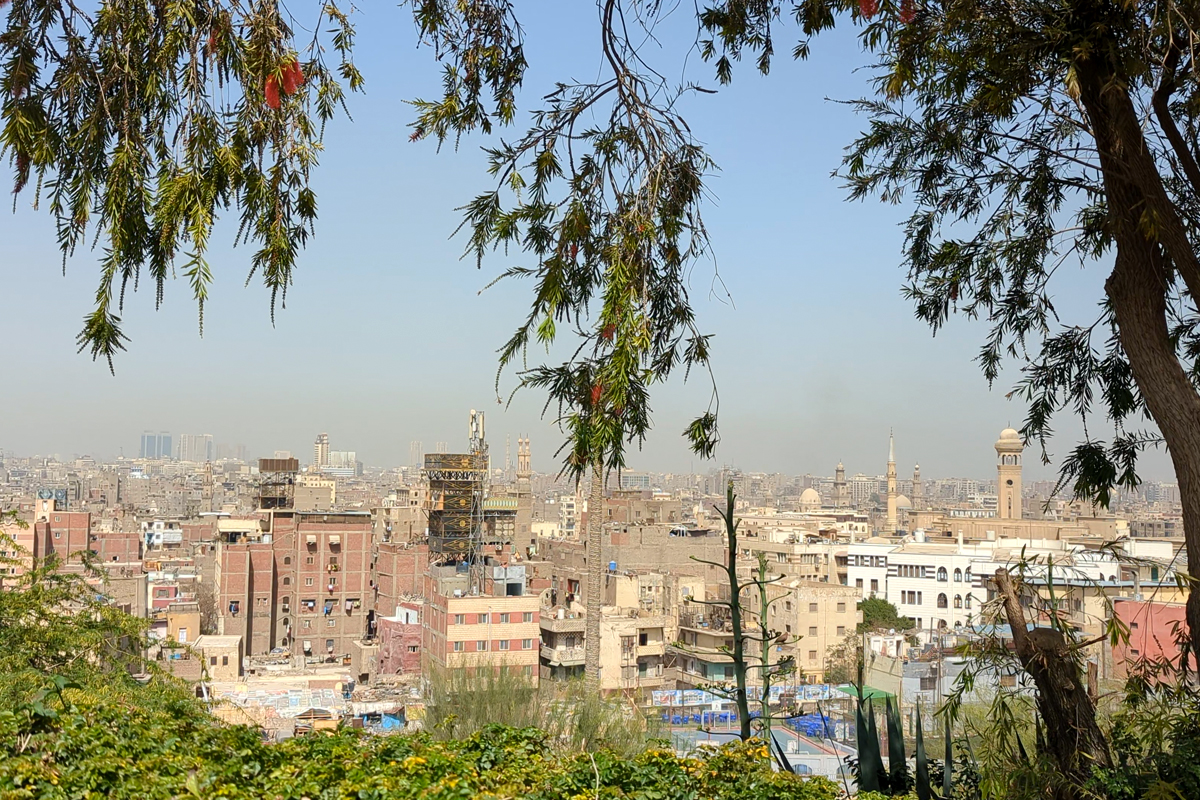
Today, Al Darb Al Ahmar is witnessing several restoration projects that aim to put more landmarks on the tourist itinerary.
The restoration projects are the work of the Aga Khan Trust for Culture, who’ve been rehabilitating the neighborhood for decades alongside Egypt’s Ministry of Tourism and the European Union.
You’ll spot some ongoing restoration work when you visit sites like Maridani, which is open to visitors while conservationalists finish off their work.
How to visit Al Darb al-Ahmar
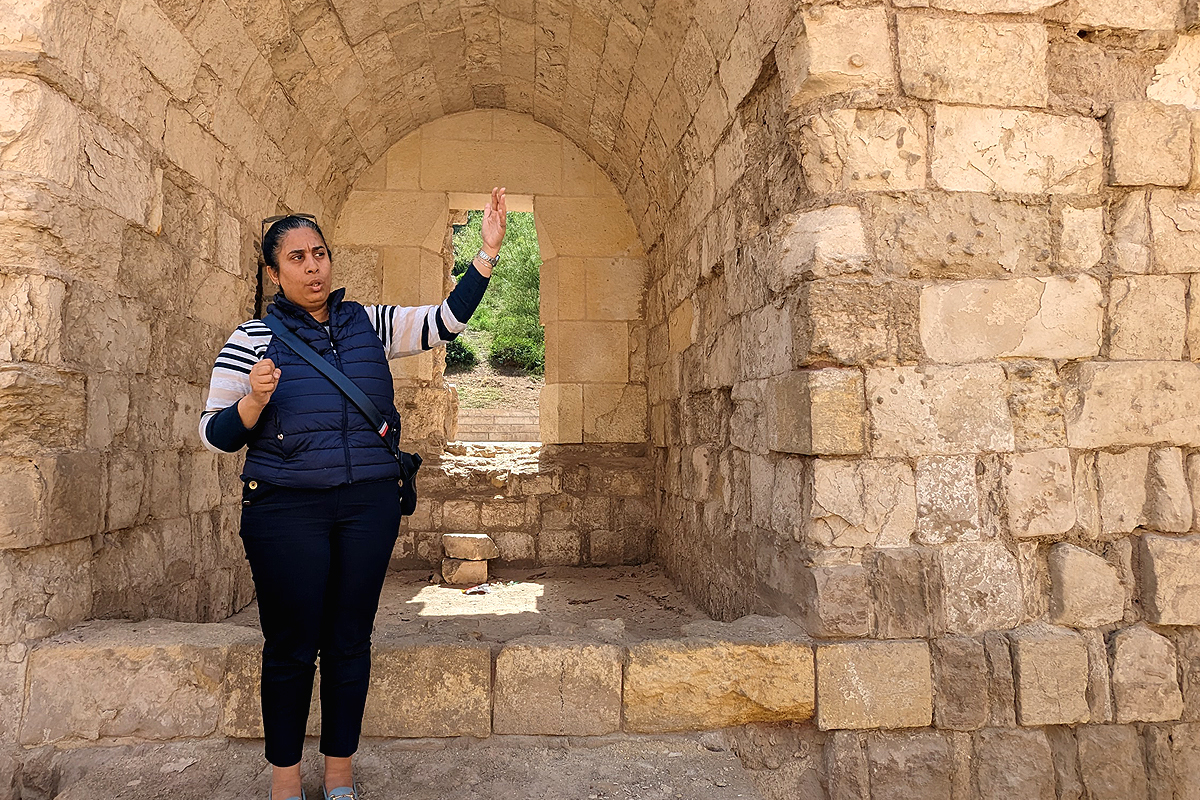
Al Darb Al Ahmar is right alongside the Tentmakers’ Market and Azhar Park. And it’s easy to visit as part of your Islamic Cairo itinerary.
And there’s a new touristic route packed with monuments that makes visiting Al Darb Al Ahmar easier (and more accessible) than ever.
Here’s how to visit:
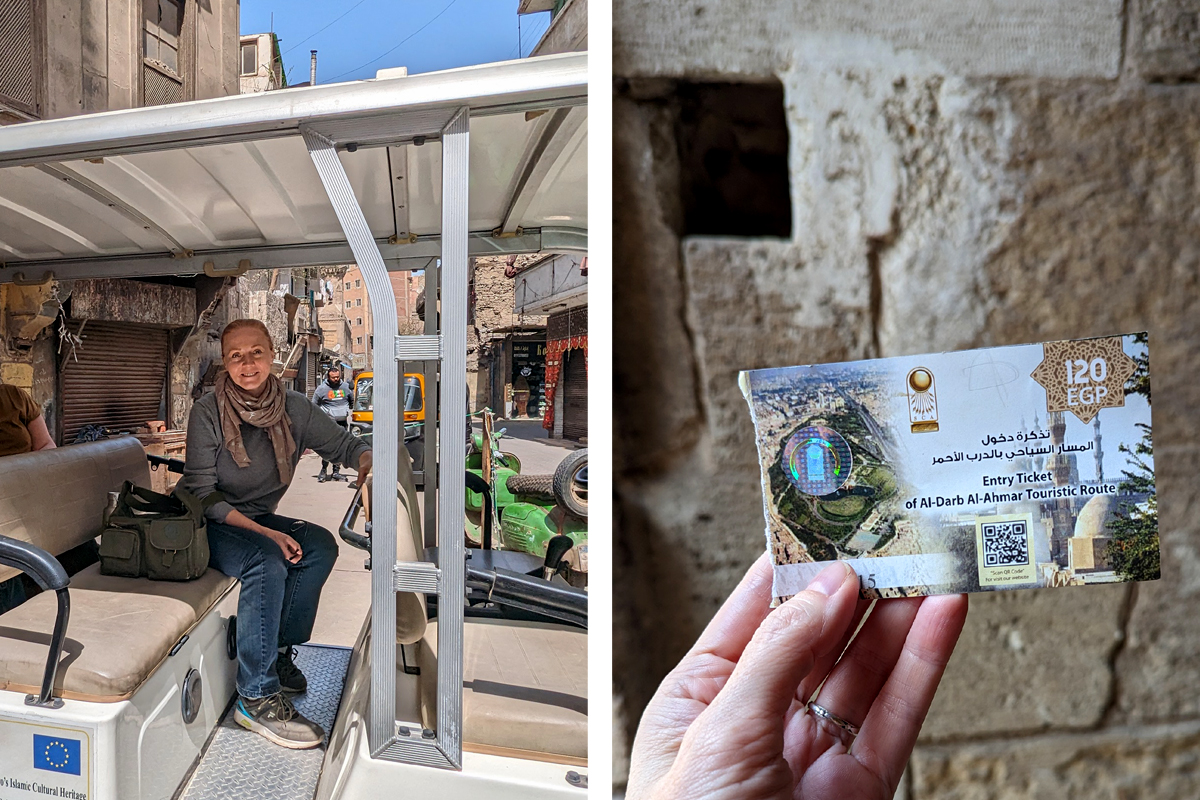
- Al Darb Al Ahmar has a list of monuments you can visit with a single “touristic route” ticket. The ticket gives you entry to monuments like Khayer-bek, Al-Maridani Mosque and the Blue Mosque. And it’s perfect if you want an in-depth look at the district’s history.
- Al Darb Al Ahmar also offers a bargain half-day tour that whisks you through the district’s essential sites on a golf cart with an expert tour guide. You can easily book this tour online (I booked mine on WhatsApp through their number).
- Or you can explore Al Darb Al Ahmar on your own and plan your own itinerary. Some monuments require the “touristic route” ticket while attractions like the Tentmakers’ Market are free to enter.
Where to start:
The easiest way is to begin either at Azhar Park or at the Tentmakers’ Market. The half-day tour gives you the option of where to start.
- If you start at Azhar Park, you’ll finish at the tip of Moez Street (where the Tentmakers’ Market and Bab Zuweila are). From there, you can continue exploring Islamic Cairo by walking up Moez Street or shopping in Khan el Khalili.
- If you start at the Tentmakers’ Market, you’ll finish at Azhar Park. This is perfect if you want to finish your walk with a stroll through the park or lunch at one of its beautiful restaurants overlooking the Citadel.
Best things to see in Al Darb Al Ahmar:
1. Azhar Park
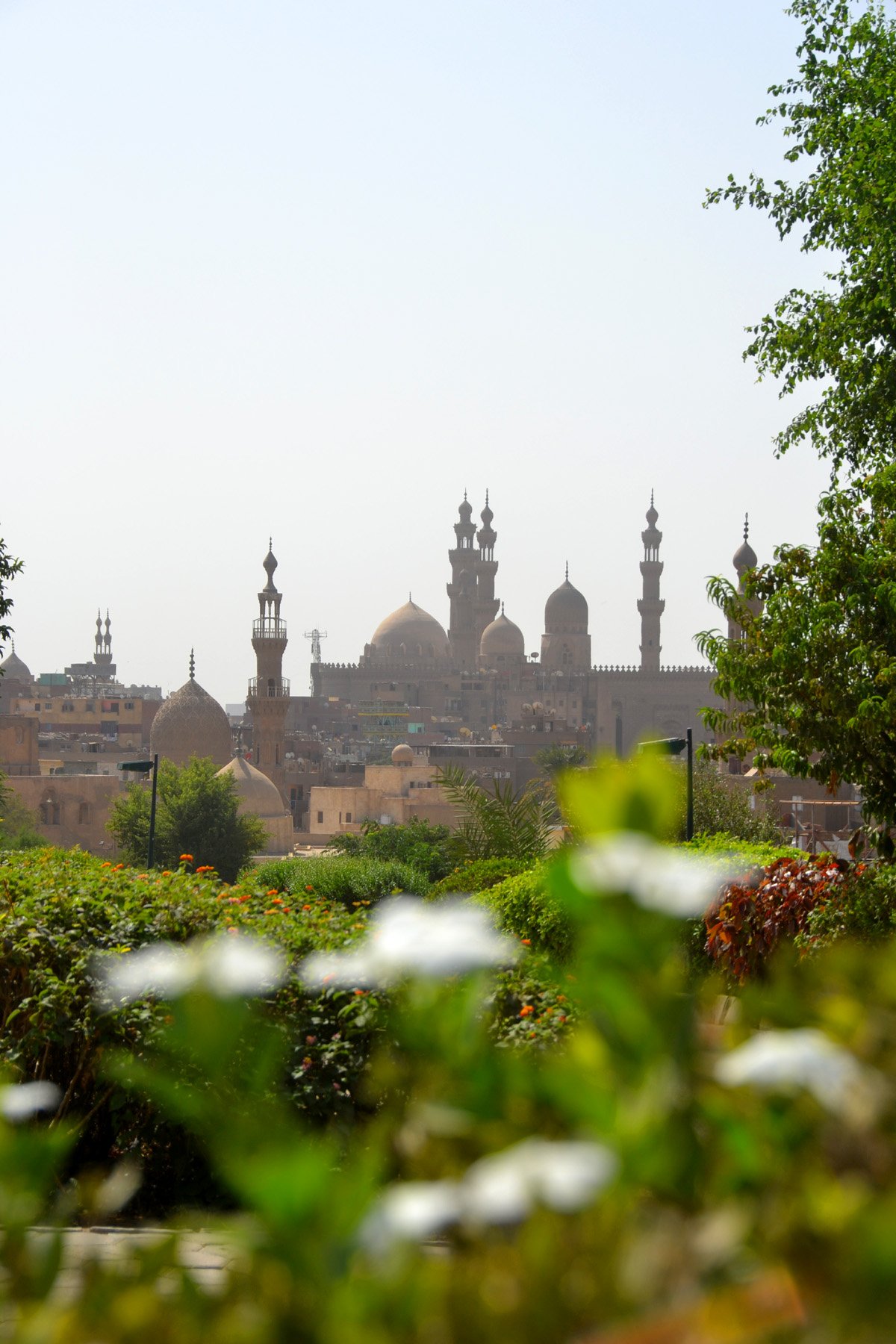
Al Azhar Park boasts sweeping views over the Citadel and Al Darb Al Ahmar amid green rolling hills, sparkling fountains and beautiful landscaping.
The guided half-day tours of Al Darb Al Ahmar also start (or end) at Azhar Park – and it’s an idyllic setting to get an overview of the district. The tour begins with coffee at the Visitor’s Center (which is right next to the Citadel View Restaurant) and an introductory video about the history of the district before you begin sightseeing.
Al Azhar Park is surprisingly green with blossoming hibiscus, frangipani trees and lawns for lounging in the grass. It’s also beautiful in the evening when the nearby Mosque of Muhammad Ali (at the Citadel) is illuminated and the upscale restaurants with city views come to life.
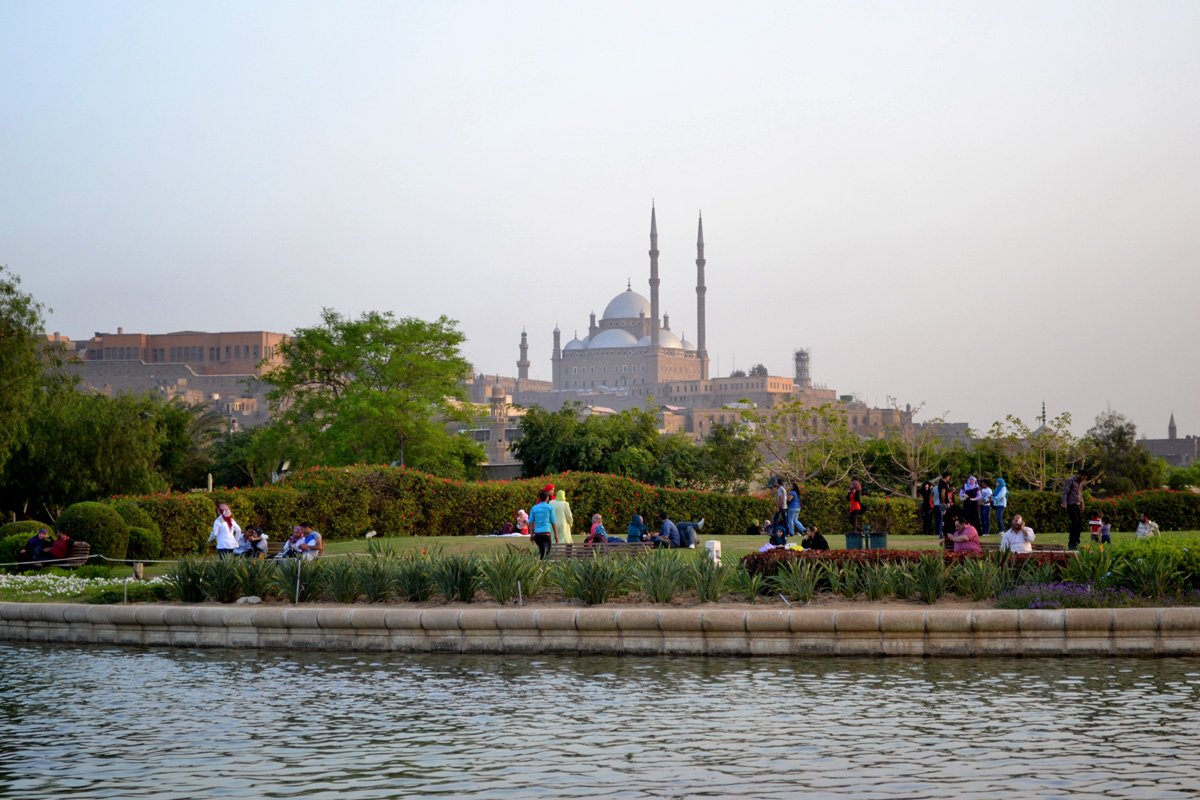
Al Azhar Park was build atop a mount of city rubble and ruins. The $30 million-dollar project was a gift to Cairo from Aga Khan IV, a descendant of the city’s Fatimid caliphs (who built much of what’s now known as Islamic Cairo).
The park is now a local favorite for family gatherings and picnics. Many of the landscape and architecture features are inspired by historic Islamic gardens.
- Don’t miss the observation point atop the hill equipped with coin-operated binoculars. It has views over Islamic Cairo and its many historic minarets.
- Don’t miss the views of the massive Mosque of Sultan Hassan and Al-Rifai at the far end of the park (see above).
Citadel View Restaurant
Citadel View Restaurant (aka Studio Misr) is a beautiful restaurant with views of the towering Mosque of Muhammad Ali – with lots of Egyptian classics on the menu.
The restaurant has a beautiful oriental-style seating area with mashrabiyas, tall columns, brass platters and mosaic fountains. There’s also a sunny terrace that overlooks the park lawns and the mosques off in the distance.
2. Ayyubid Wall
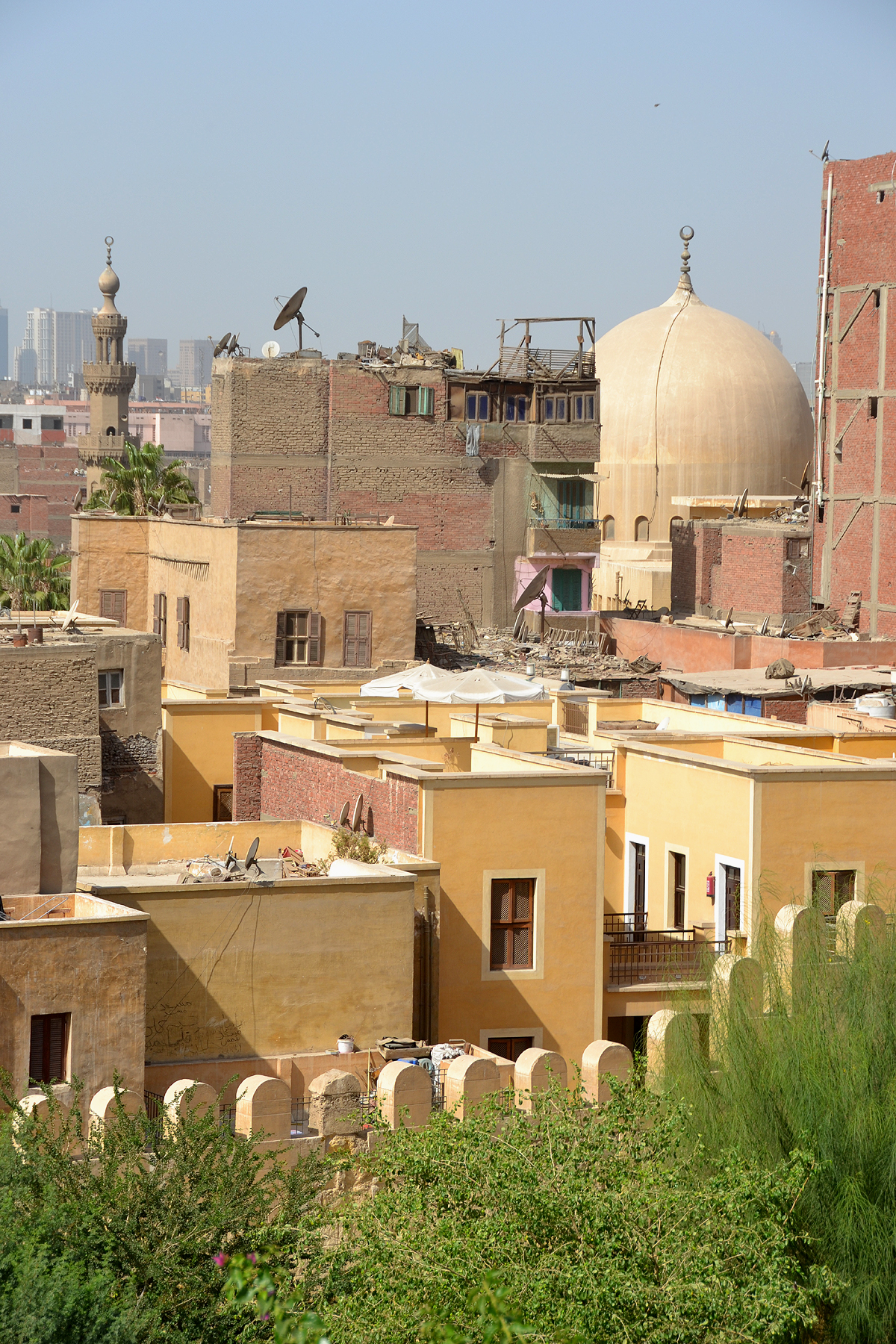
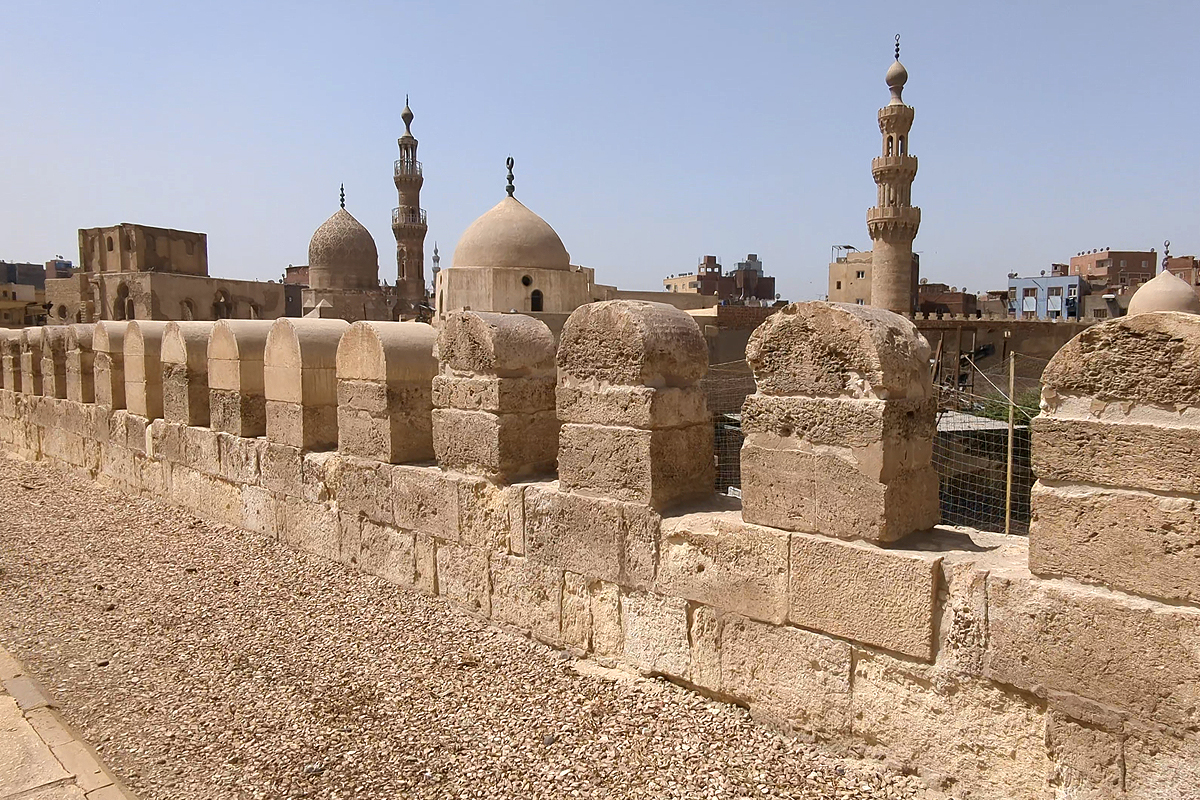
3. Khayer-bek Complex
4. Aq Sunqor (The Blue Mosque)
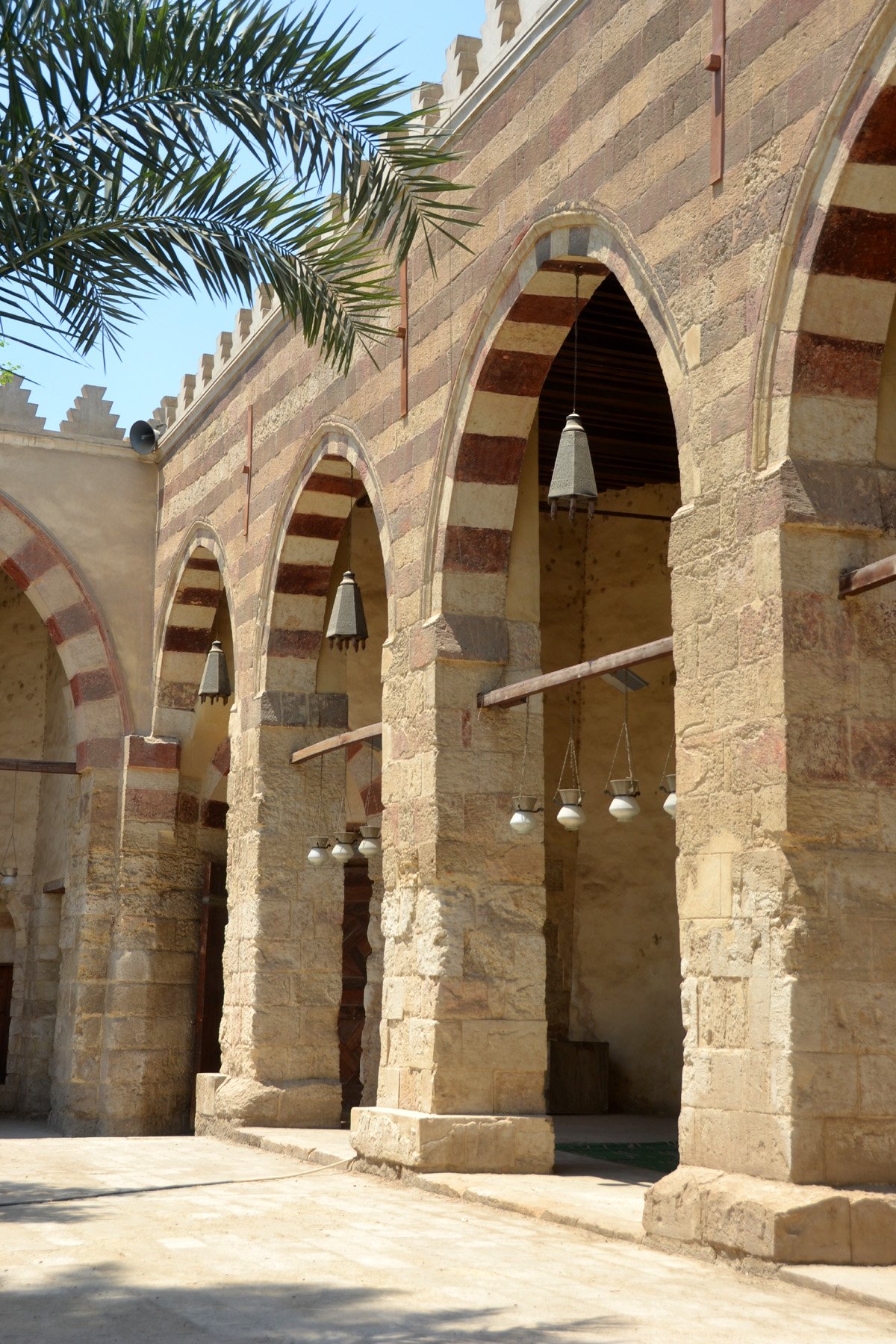
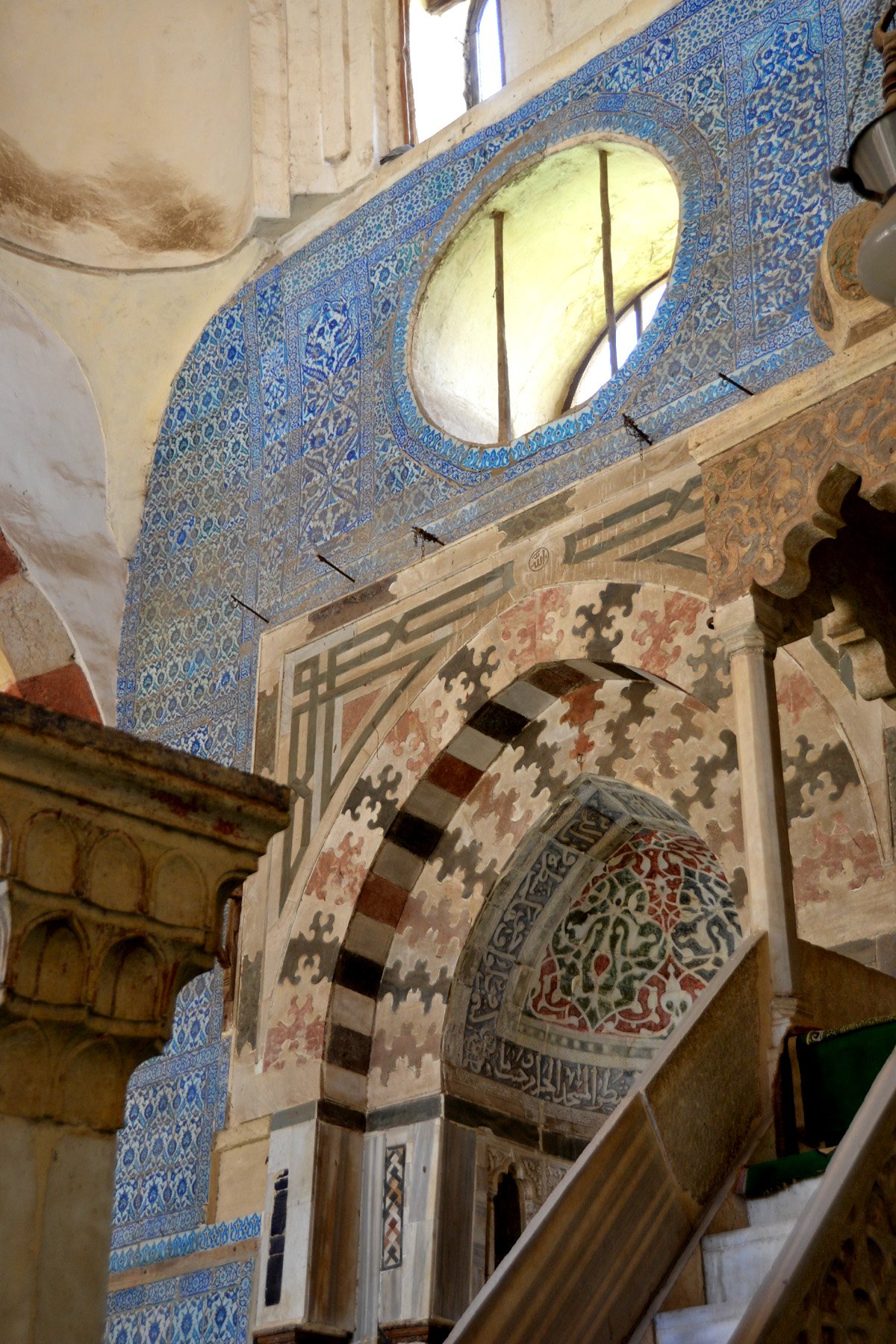
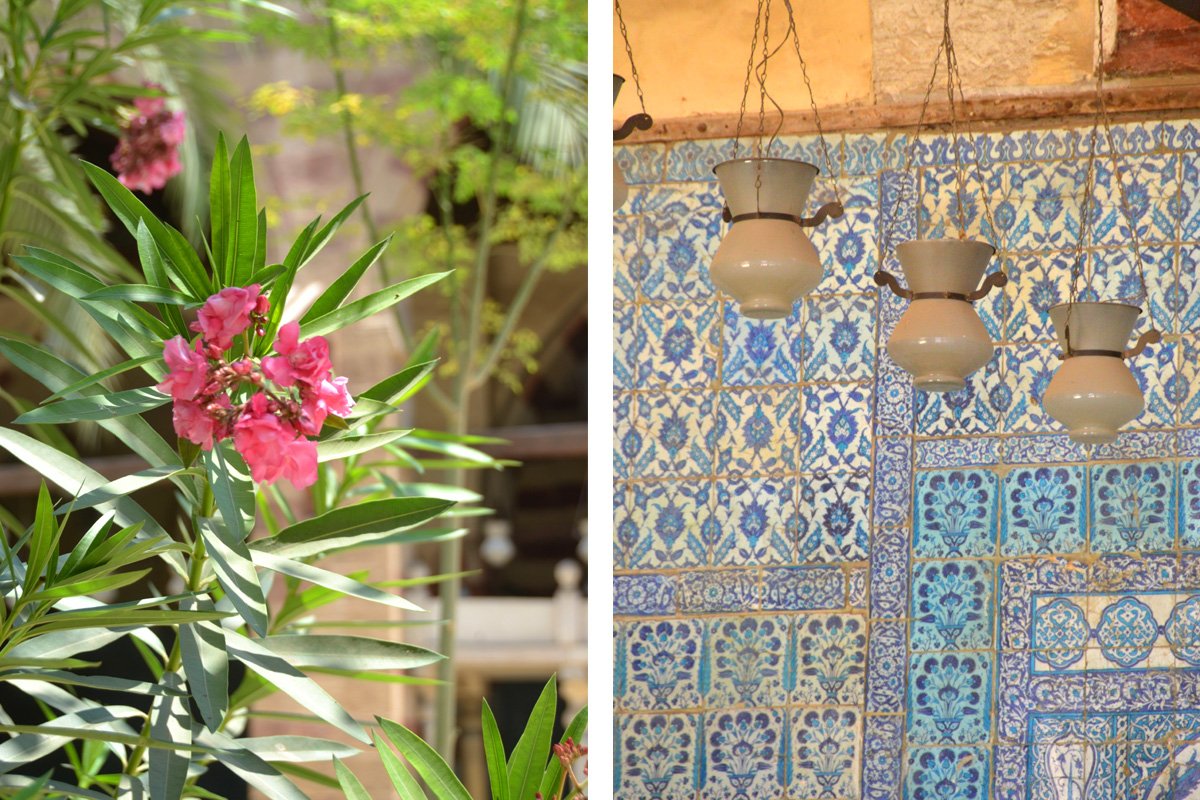
Aqsunqur is one of several blue mosques in the world. The Mamluks built it in 1347 with a leafy courtyard and walls of intricate blue tiles.
It’s a funerary complex for its founder and his children.
Centuries later, the Ottomans added the mosque’s famous blue tiles. They restored the mosque and decorated it with blue and green Iznik tiles from Constantinople.
5. Al Maridani Mosque
Established in 1340, this mosque is another Mamluk treasure with a hypostyle plan and a richly decorated facade.
It was lavish for its time thanks to the wealth of its patron al-Maridani and his father-in-law Sultan Muhammad.
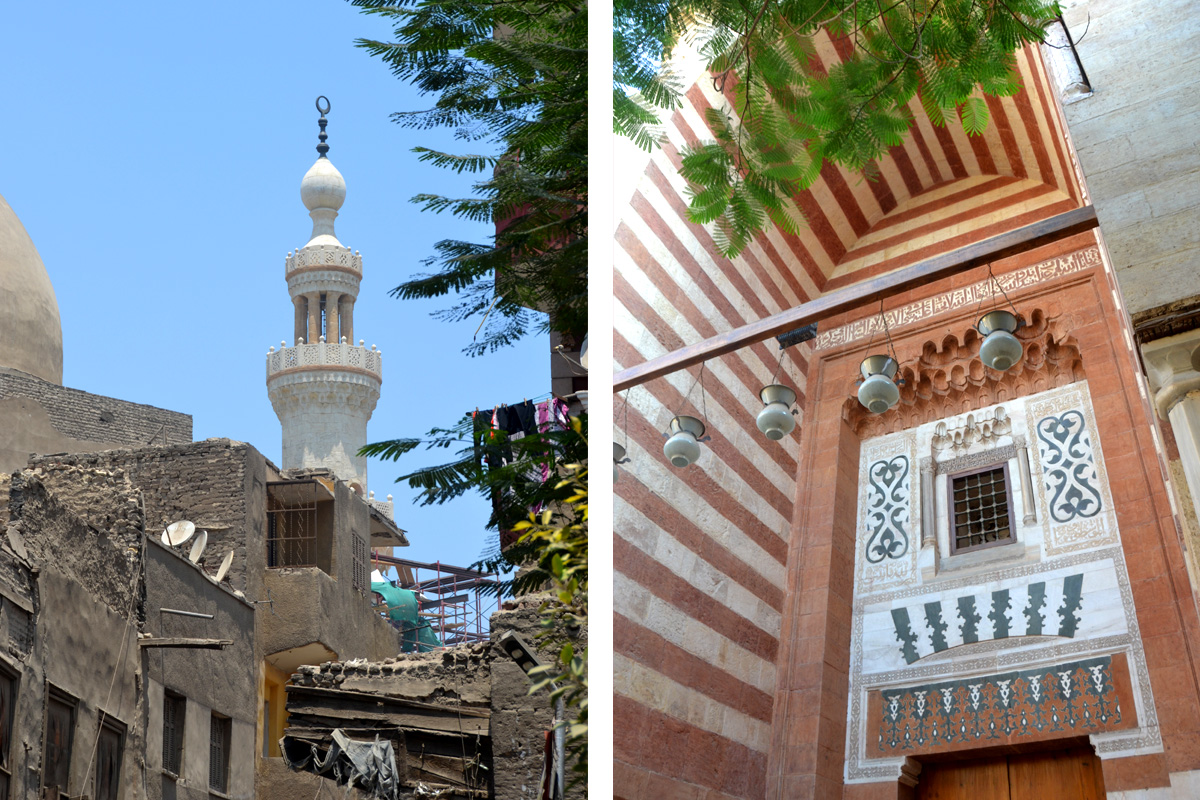
The mosque boasts the first fully octagonal minaret topped with a bulb and a large dome. Interestingly, eight columns around the dome have ancient Egyptian tops brought from Upper Egypt.
6. Al-Salih Tala’i Mosque
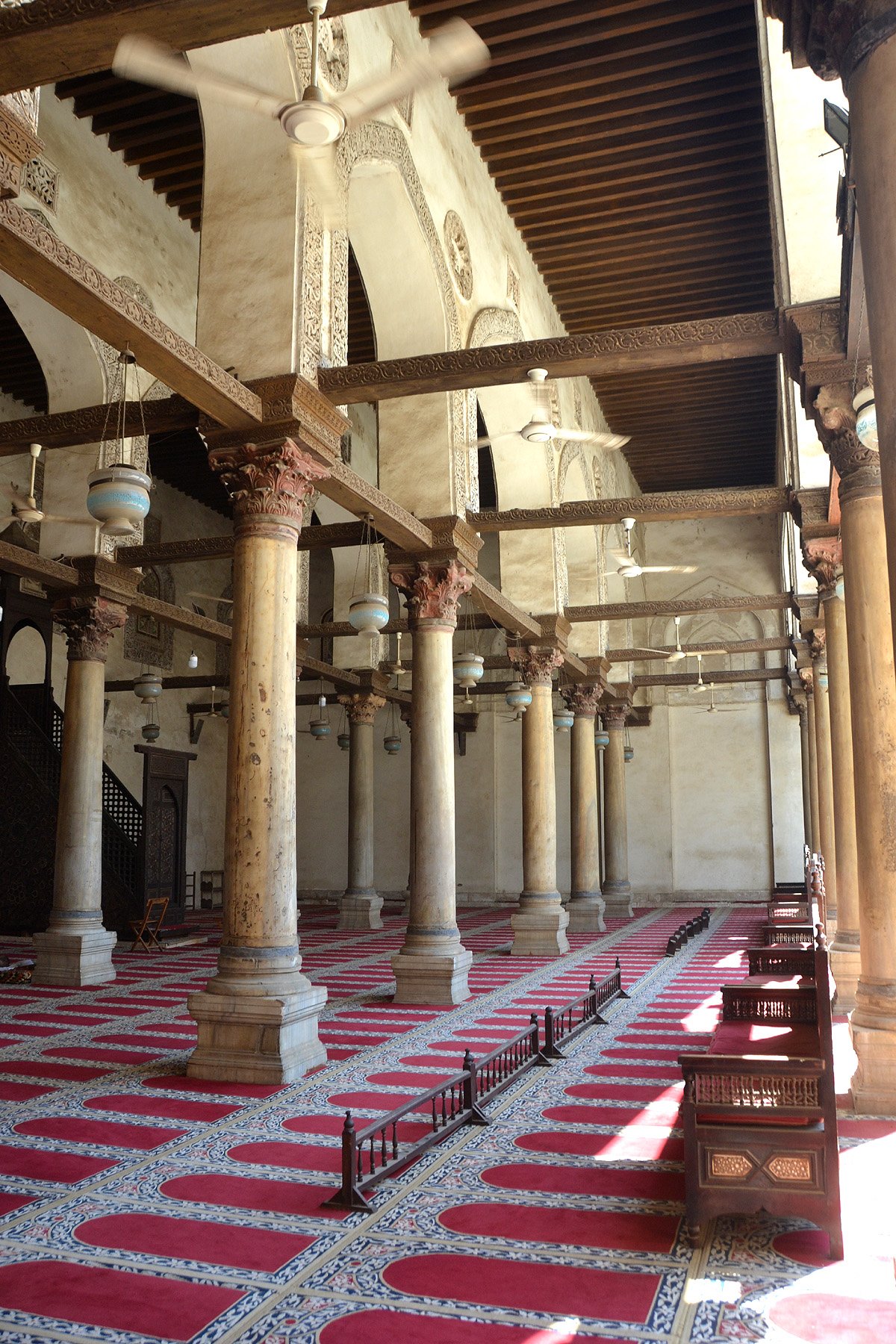
12th century, Fatimid | free | on the map
Built in 1160, Al-Salih Tala’i is Cairo’s last Fatimid mosque.
It’s built on a raised platform with a base for street level shops that once contributed to the mosque’s revenue. However, the base sunk over the centuries because of rising street levels. You can still see the vacant shops half-buried along the mosque’s walls.
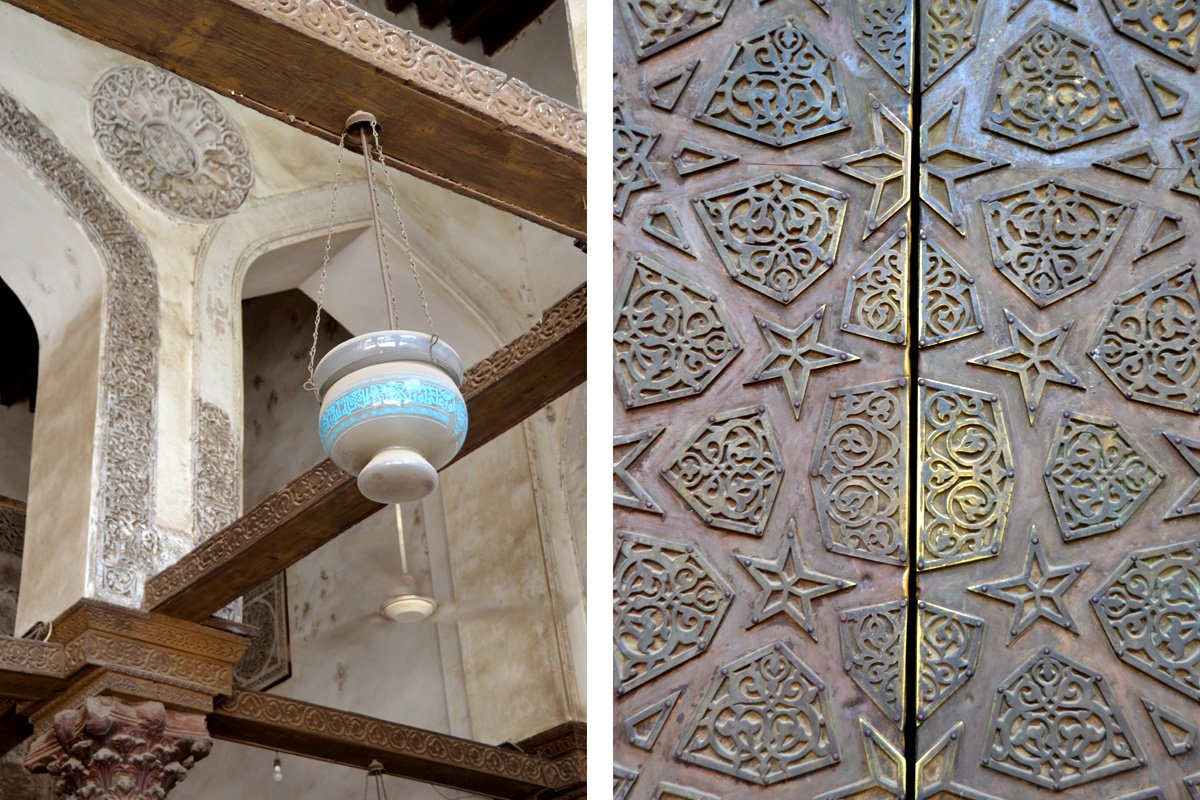
The courtyard is breezy and features rows of keel-shaped arches. Don’t miss the calligraphy in stucco around the arches, the wooden tie-beams and gorgeous stained-glass windows.
7. Khayamiya market
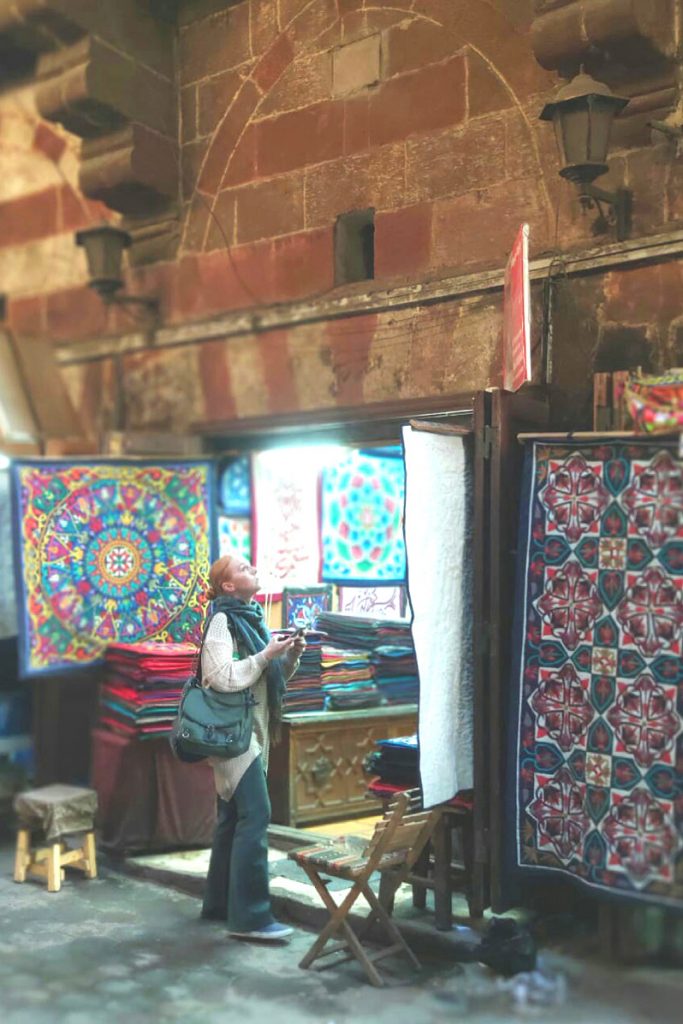
17th century, Mamluk | free | on the map
Known as the street of the tentmakers (Sharia al-Khayamiya), this covered market sells a colorful type of decorative applique textile known as khayamiya.
It’s also one of my favorite places to shop in medieval Cairo – it’s far less crowded and the vendors aren’t as pushy as their Khan el Khalili counterparts. They’ll generally give you a fair price from the start and there’s not much need to haggle.
There are rugs, quilted pillow cases and wall hangings sold by the artisans themselves in their tight and narrow shops.
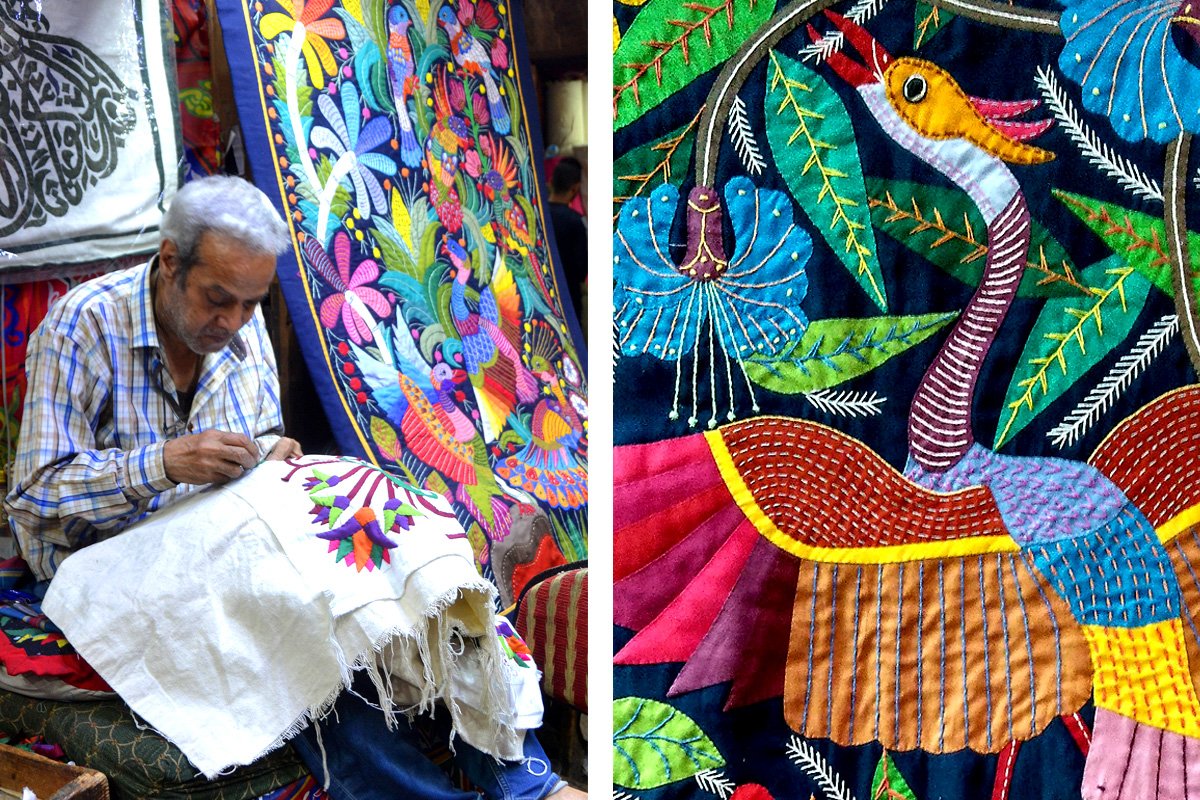
And you’ll often see the artisans at work hand-stitching cushion covers or bedspreads. Their needles tackle themes from Islamic calligraphy to Ancient Egypt, local folklore, fish, birds and verses from the Quran.
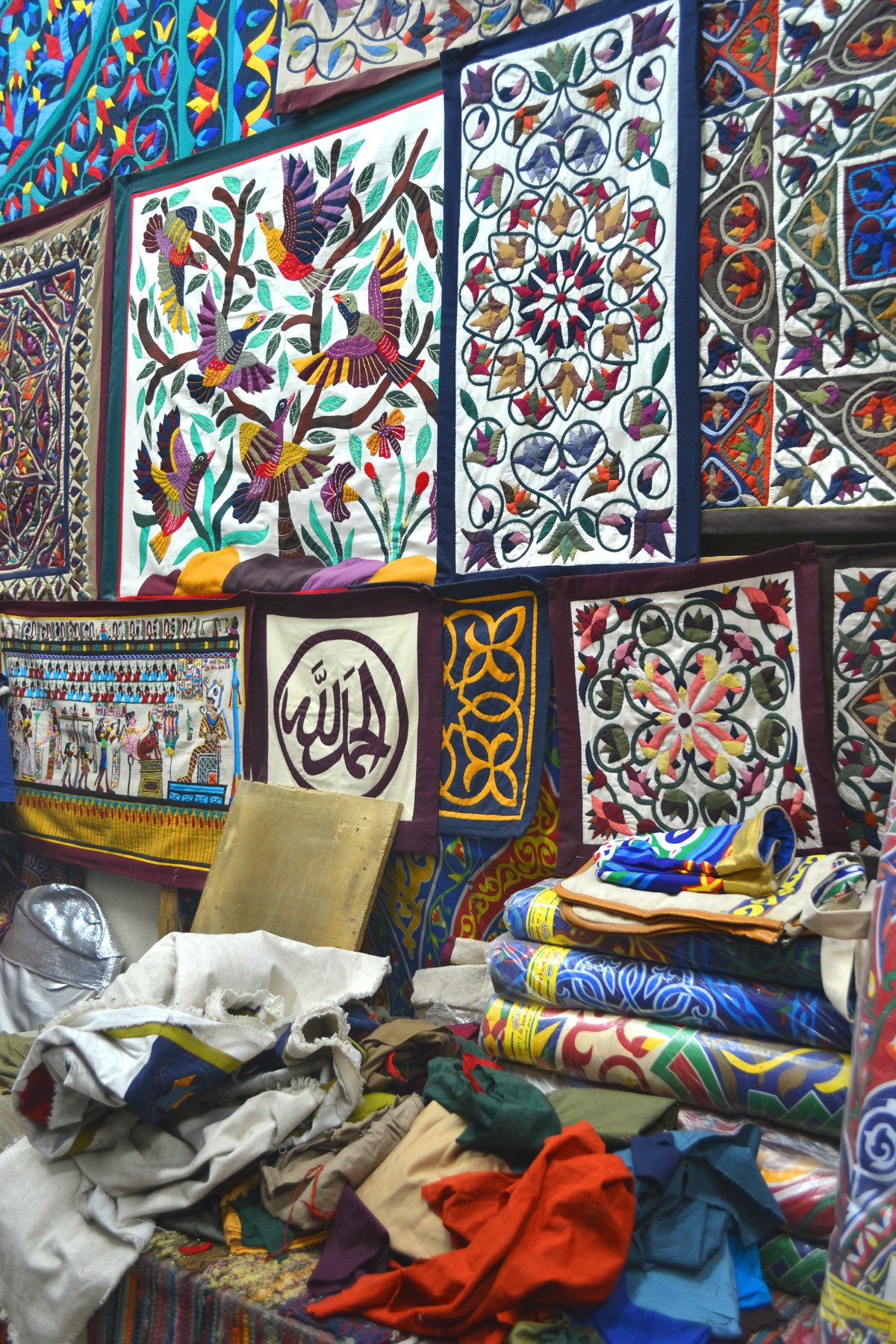
- The Qasaba that houses the khayamiya market is worth a look in itself. Built during Mamluk rule in 1650, it’s the only historic covered market in the city. Look above the shop facades and you’ll see the upper floor apartments built for the artisans.
- There’s evidence that khayamiya dates back to Ancient Egypt. But this traditional craft is now endangered because of cheap imitations and factory-printed fabric.
8. Bab Zuweila
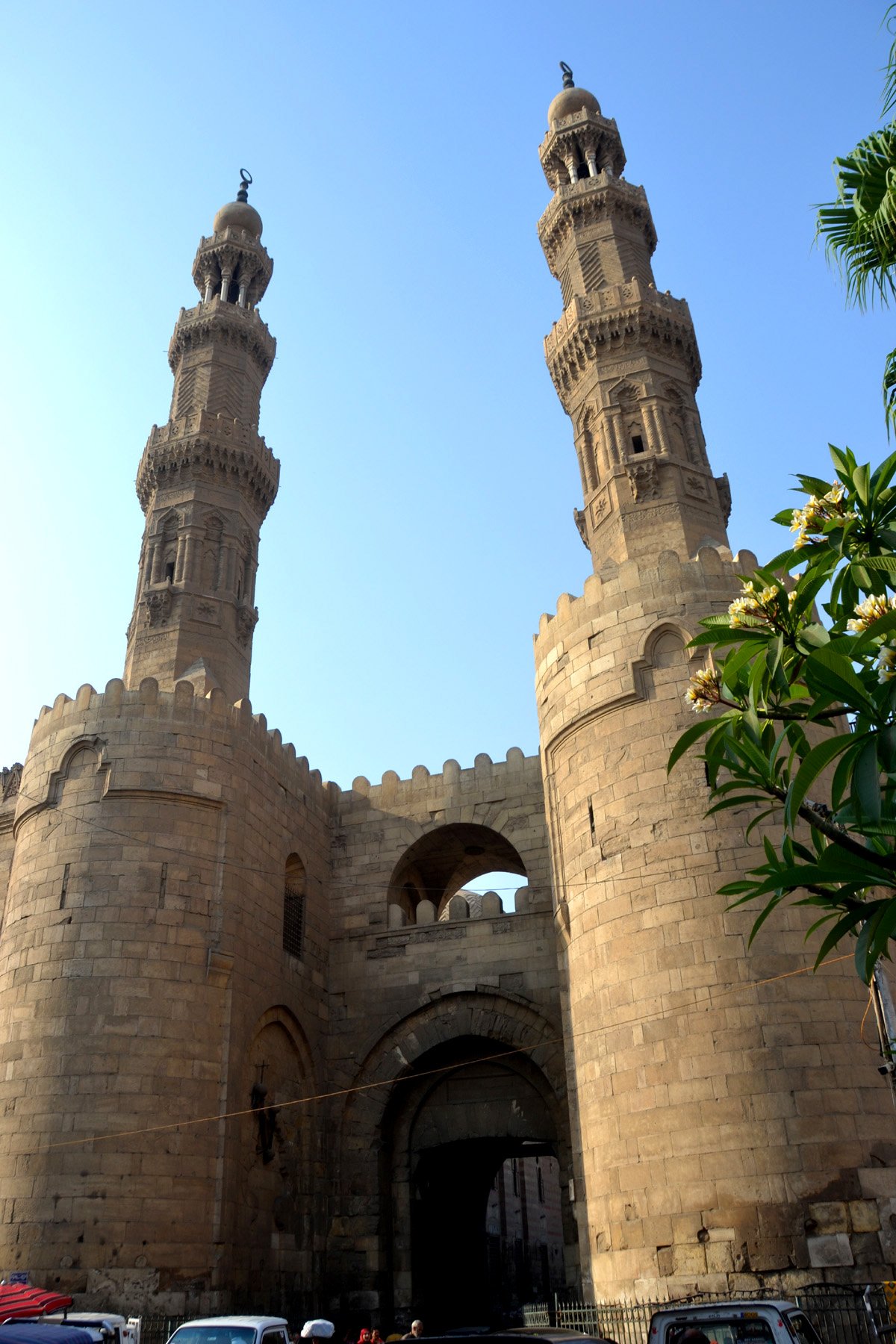
11th century, Fatimid | tickets: 40 EGP | on the map
Bab Zuweila is one of the few remaining gates of the city wall that encircled 11th-century Cairo. It’s topped by two minarets that were added on by a Mamluk sultan in the 15th century.
And you can climb to the top for some great views of the old city.
The steep stairs are quite a workout. But it’s worth it for the sweeping views of Fatimid Cairo and the surrounding minarets. It’s especially magical during the call to prayer.
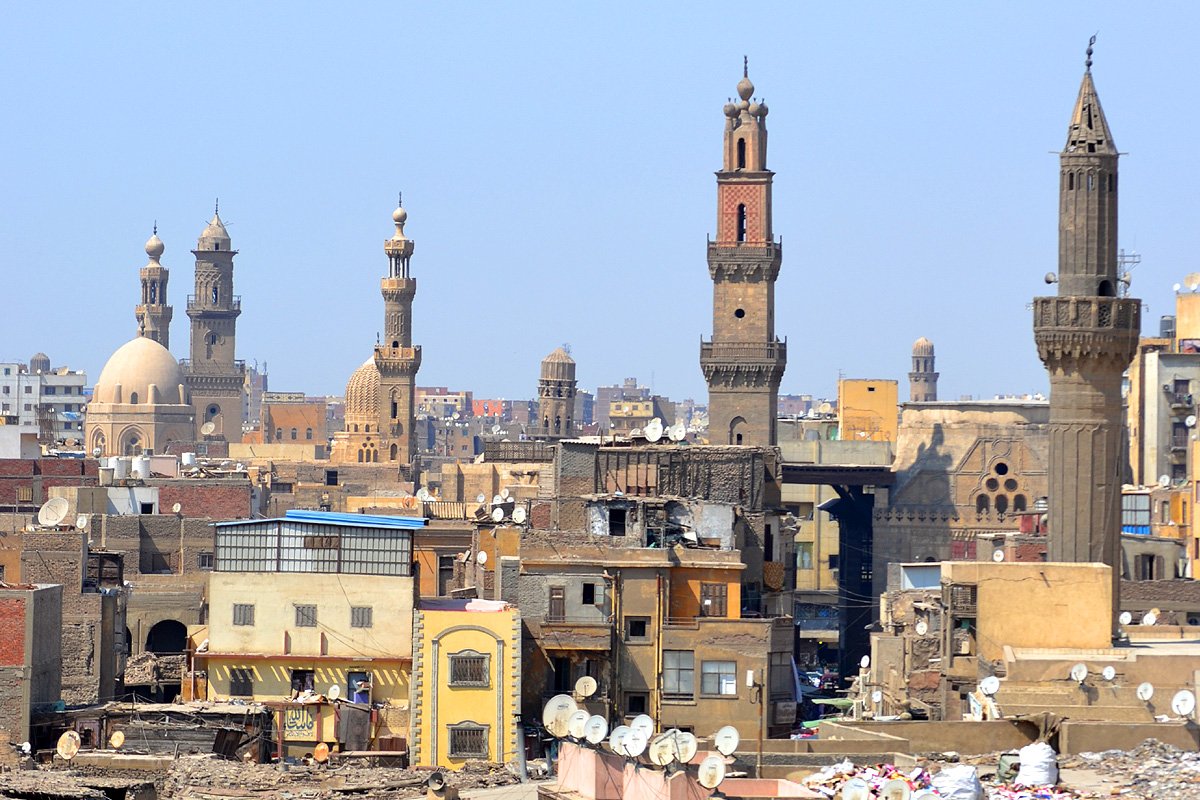
- The towers of Bab Zuweila were once used to scope out approaching enemy troops.
- The sultan also used the platform to watch Mecca-bound processions headed on the annual pilgrimage.
- The gate also has a grisly history: the platform was used for executions. And severed heads were displayed on the tops of the walls as recently as 1811 after the Citadel massacre of the Mamluks by the Ottomans.
